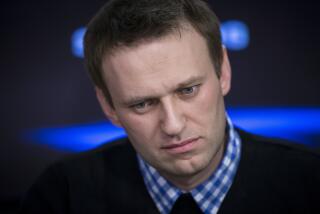Jury sees Boston bomber’s writings on Islam and ‘killing innocent people’
- Share via
Reporting from Boston — Minutes after Dzhokhar Tsarnaev was captured hiding in a boat in Watertown, Mass., two Boston police bomb technicians climbed into the craft searching for explosive devices. Instead they stumbled upon writings he had scribbled on the left side of the hull.
Pictures of those writings were shown Tuesday to the jury in Tsarnaev’s capital murder trial stemming from the 2013 Boston Marathon bombings. While some portions have been made public before, this was the first time the writings were released in their entirety.
In his handwritten pencil scrawl, the writings illustrate, prosecutors said, Tsarnaev’s personal motivation for killing “innocent people.” For his legal defense team, they show his deep admiration of his older brother, Tamerlan Tsarnaev, who the defense claims was the mastermind of the April 2013 bombings. Tamerlan died as police tried to capture him days after the attack. He was shot by police and then run over by his brother, who was fleeing the scene.
On computer screens in the courtroom, three writing sections were shown to the jury; prosecutors presented written transcripts as well. Many of the words and phrases were missing because of the numerous bullet holes made by police during Tsarnaev’s capture. Some words were misspelled and some sentences were written without punctuation. Streaks of blood obscured other parts.
“I’m jealous of my brother who ha … ceived the reward of jannutul Firdaus (inshallah) before me,” Tsarnaev wrote in one message.
“I do not mourn him because his soul is very much alive. God has a plan for each person. Mine was to hide in his boat and shed some light on our actions I ask Allah to make me a shahied (iA) to allow me to return to him and be among all the religious people in the highest levels of heaven.
“He who Allah guides, no one can misguide. A … bar!”
In another message, Tsarnaev appears to justify the bombings that killed three people and injured more than 260 others, referring to the prophet Muhammad and holy war.
“We are promised victory and we will surely get it. Now I don’t like killing innocent people it is forbidden in Islam but due to said … it is allowed.”
In a third message Tsarnaev wrote: “I bear witness that there is no God but Allah and that Muhammad is his messenger.
“The U.S. Government is killing our innocent civilians but most of you already know that. As a M … I can’t stand to see such evil go unpunished, we Muslims are one body, you hurt one you hurt us all, well at least that’s how Muhammad wanted it to be … ever.”
Prosecutors are expected to use the writings to portray Tsarnaev as a religious extremist who believed the bombings were justified.
Tsarnaev has pleaded not guilty to the 30-count indictment and faces the death penalty if convicted. Despite his plea, however, his lawyer, Judy Clarke, acknowledged in her opening statement that her client detonated one of the bombs. She has argued that he was under the influence of his older brother.
The boat has become the subject of some controversy in the trial. In addition to the transcripts of Tsarnaev’s writings presented to the jurors Tuesday, the government wants to bring in the actual panels from the boat and show the jury how they look.
The defense, however, has insisted that the entire boat be brought to the courthouse, or the jury brought to an FBI evidence storage site to examine the vehicle. The defense clearly wants the jury to see the number of bullet holes fired at the craft, and the pools of their client’s dried blood inside the boat.
Though police feared Tsarnaev might have rigged explosives to the boat, they found no firearms or explosives. After being surrounded and shot by police, he climbed out and surrendered.
Tuesday afternoon, Judge George A. O’Toole Jr. adjourned court early and announced he was leaving to inspect the boat himself, apparently with representatives from both legal teams.
@RickSerranoLAT
More to Read
Sign up for Essential California
The most important California stories and recommendations in your inbox every morning.
You may occasionally receive promotional content from the Los Angeles Times.











